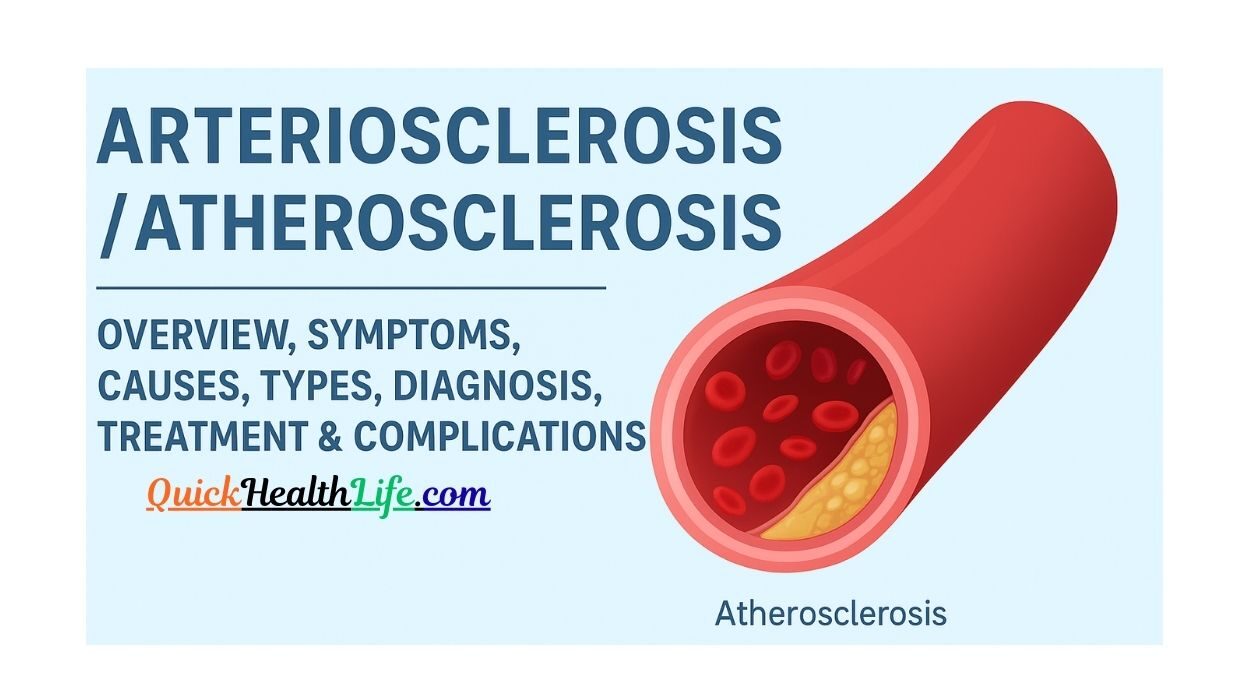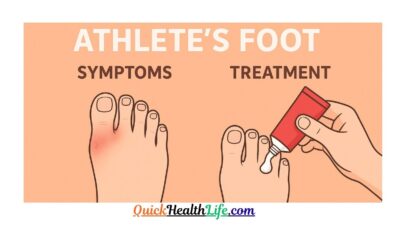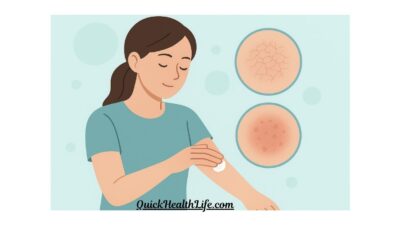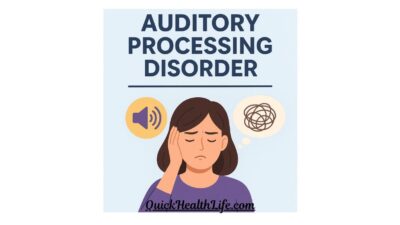What is Arteriosclerosis?
Arteriosclerosis is a general term that means hardening and thickening of arteries. Arteries are the blood vessels that carry oxygen-rich blood from the heart to the rest of the body.
When these arteries become stiff or lose flexibility, blood flow is affected, which can put pressure on the heart and increase the risk of cardiovascular diseases.
What is Atherosclerosis?
Atherosclerosis is a type of arteriosclerosis. It specifically refers to the buildup of plaque (fat, cholesterol, calcium, and other substances) inside the arteries.
Over time, these plaques can narrow the arteries and reduce blood flow. In some cases, plaques can rupture and cause blood clots, leading to heart attack or stroke.
Table of Contents
Arteriosclerosis vs Atherosclerosis
| Feature | Arteriosclerosis | Atherosclerosis |
|---|---|---|
| Definition | General hardening and thickening of arteries | Narrowing of arteries due to plaque buildup |
| Cause | Aging, loss of elasticity | Fat, cholesterol, calcium deposits |
| Effect | Reduced flexibility of arteries | Blockage of blood flow |
| Risk | High blood pressure | Heart attack, stroke, peripheral artery disease |
Causes of Atherosclerosis
The exact cause is complex, but several factors contribute to the development of atherosclerosis:
- High cholesterol levels
- High blood pressure (hypertension)
- Smoking
- Obesity and unhealthy diet
- Diabetes
- Lack of physical activity
- Genetic factors
- Chronic inflammation
Symptoms of Atherosclerosis
In early stages, atherosclerosis may not cause noticeable symptoms. But as it progresses, symptoms appear depending on the affected arteries.
Common symptoms include:
- Chest pain (angina)
- Shortness of breath
- Fatigue
- Numbness or weakness in arms or legs
- Difficulty speaking or seeing (if brain arteries are affected)
These are often searched as: “What are 5 symptoms of atherosclerosis?”
- Chest pain
- Shortness of breath
- Leg pain while walking (claudication)
- Fatigue
- Numbness/weakness in limbs
Types of Arteriosclerosis
There are different forms of arteriosclerosis:
- Atherosclerosis – plaque buildup inside arteries.
- Arteriolosclerosis – affects small arteries and arterioles.
- Monckeberg’s arteriosclerosis – calcium deposits in middle layer of arteries.
Stages of Atherosclerosis
- Endothelial Damage – injury to artery walls from smoking, high blood pressure, or cholesterol.
- Fatty Streak Formation – cholesterol starts depositing.
- Plaque Growth – thickening of artery walls with fat, calcium, and inflammatory cells.
- Plaque Rupture / Clot Formation – sudden blockage leading to heart attack or stroke.
Diagnosis of Atherosclerosis
Doctors use different tests to diagnose:
- Blood tests – to check cholesterol and blood sugar.
- Electrocardiogram (ECG) – measures heart’s electrical activity.
- Echocardiogram – ultrasound of the heart.
- Angiography – X-ray with dye to see blood flow in arteries.
- Doppler Ultrasound – checks blood flow in arms and legs.
- CT / MRI Scan – detailed images of arteries.
Treatment of Atherosclerosis
Treatment aims to slow down progression, reduce symptoms, and prevent complications.
1. Lifestyle Changes
- Quit smoking
- Eat a balanced, low-fat diet
- Exercise regularly
- Maintain a healthy weight
- Reduce stress
2. Medications
- Statins – to lower cholesterol
- Antihypertensives – to control blood pressure
- Antiplatelets (aspirin, clopidogrel) – to prevent clots
- Diabetes medications – to control sugar
3. Medical Procedures
- Angioplasty with stent – to open narrowed arteries
- Bypass surgery – to create new pathways for blood flow
- Endarterectomy – surgical removal of plaque
Complications of Atherosclerosis
If untreated, atherosclerosis can lead to:
- Coronary artery disease (heart attack)
- Stroke
- Peripheral artery disease (leg pain, ulcers)
- Chronic kidney disease
- Aneurysm (bulging artery that may rupture)
Atherosclerosis Pathophysiology
- Damage to artery lining
- Cholesterol enters artery walls
- Immune cells form plaque
- Artery narrows and hardens
- Reduced blood flow and risk of clotting
FAQs on Atherosclerosis
Q1. What is atherosclerosis?
Atherosclerosis is the buildup of plaque in the arteries, causing narrowing and reduced blood flow.
Q2. Is atherosclerosis treatable?
Yes, it can be managed with lifestyle changes, medicines, and procedures.
Q3. What are 5 symptoms of atherosclerosis?
Chest pain, shortness of breath, fatigue, leg pain, numbness/weakness.
Q4. Is atherosclerosis reversible?
Complete reversal is difficult, but lifestyle changes and treatment can stop progression and improve health.
Q5. What is the difference between arteriosclerosis and atherosclerosis?
Arteriosclerosis is general hardening of arteries, while atherosclerosis is plaque buildup inside arteries.
Q6. What is the best diet for atherosclerosis?
A diet rich in fruits, vegetables, whole grains, fish, nuts, and olive oil – similar to the Mediterranean diet.



